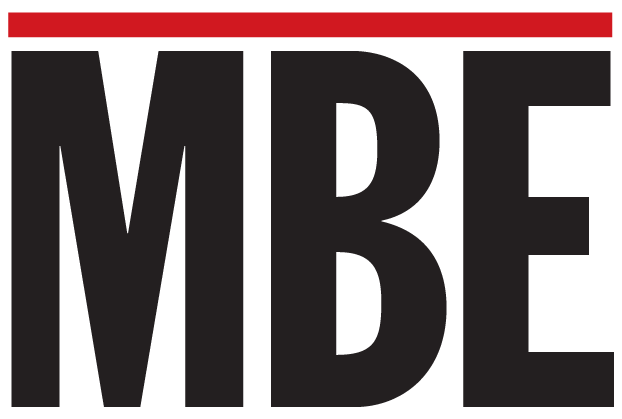
The digital revolution isn’t just transforming how we do business—it’s democratizing success for diverse entrepreneurs. As traditional barriers to entry crumble under the weight of technological advancement, minority business owners, LGBTQ+ entrepreneurs, and women founders are finding unprecedented opportunities to compete and thrive in the digital marketplace.
Why the Digital Pivot is Essential for Diverse Entrepreneurs
The global pandemic accelerated digital transformation for businesses of all sizes. According to a McKinsey Global Survey of executives, companies “accelerated the digitization of their customer and supply chain interactions by three to four years” in 2020 alone. For diverse entrepreneurs—often navigating limited access to funding, smaller networks, and systemic barriers—this pivot offers unprecedented opportunities.
Recent market trends underscore the urgency of this digital pivot:
- Global e-commerce is projected to reach $8.1 trillion by 2027
- Consumer expectations for seamless digital experiences are at an all-time high
- AI and automation tools are making enterprise-level capabilities accessible to small businesses
Technology as the Great Equalizer
While the digital divide has historically been a barrier, it’s also an area ripe for innovation. Technology is proving to be a powerful leveling force. Cloud-based tools and platforms enable diverse entrepreneurs to:
- Reach global markets without significant overhead
- Automate operations to compete with larger corporations
- Build strong customer relationships through data-driven insights
- Scale operations efficiently with limited resources
Key Technologies Transforming Small Businesses
Diverse entrepreneurs are using a wide range of tools to stay competitive. Let’s dive into the technologies driving their success:
1. E-Commerce Platforms
Platforms like Shopify, Wix, and Square have democratized access to global markets. These tools make it easy to set up an online store, manage inventory, and integrate payment systems.
2. Social Media Marketing Tools
Social media remains a game-changer, especially for entrepreneurs targeting younger demographics. Tools like Canva simplify the creation of professional visuals, while platforms like Meta Ads Manager help businesses target specific audiences.
3. Automation and Productivity Tools
Software like Zapier, Notion, and QuickBooks enables entrepreneurs to automate repetitive tasks, manage projects, and streamline finances.
4. AI and Analytics Tools
Artificial intelligence tools like ChatGPT and Jasper are helping entrepreneurs generate content, while Google Analytics offers insights into customer behavior.
Case Studies: Diverse Entrepreneurs Making the Digital Pivot
Case Study 1: Black-Owned E-Commerce Brand
Facing declining in-store sales, this brand pivoted to online retail using Shopify and Facebook Ads. Within six months, online sales accounted for 80 percent of total revenue. By analyzing customer data, the brand introduced new product lines tailored to online shoppers.
Case Study 2: Latina Consultant
When in-person workshops were canceled, this entrepreneur transitioned to virtual events. Using Zoom and Calendly, she offered one-on-one consultations, increasing her client base by 40 percent.
Case Study 3: LGBTQ+ Startup
This founder struggled with manual processes until discovering automation tools. With Zapier, they connected payment systems, email marketing, and customer records, scaling their business while reducing operational costs by 25 percent.
Overcoming Barriers to Digital Transformation
1. Access to Capital
Investing in technology often requires upfront capital. Fortunately, diverse entrepreneurs can explore:
- Grants tailored to underrepresented business owners (e.g., Small Business Innovation Research grants).
- Loans from community-focused organizations.
- Crowdfunding platforms like Kickstarter and iFundWomen.
2. Building Digital Skills
Knowledge gaps can hinder transformation. Free or low-cost platforms like Coursera, Udemy, and LinkedIn Learning offer courses on e-commerce, marketing, and automation.
3. Creating a Tech Strategy
Start small by identifying the areas where technology can have the biggest impact, such as improving customer experience or automating administrative tasks. Scale gradually as you see results.
Actionable Steps for Embracing the Digital Pivot
- Audit Your Business Needs:
- Identify core business processes that could benefit from automation
- Assess current technical capabilities and knowledge gaps
- Prioritize improvements based on potential impact
- Example: Are you spending hours on manual invoicing? Switch to QuickBooks.
- Invest in the Right Tools:
- Choose tools that align with your goals. Start with free trials to evaluate fit.
- Leverage Community and Resources:
- Join entrepreneur networks like the Minority Business Development Agency (MBDA) for peer advice.
- Measure and Adapt:
- Use analytics tools to track performance and make data-driven decisions. Regularly review KPIs to refine your approach.
The digital pivot isn’t just a trend—it’s the future of business success. Success in the digital age requires continuous learning and adaptation. Start by identifying one area where technology could improve your business operations, then take incremental steps toward implementation. Remember, the goal isn’t to digitize everything at once, but to build a strong foundation for long-term growth and success.
For diverse entrepreneurs, technology offers the power to overcome barriers, scale operations, and compete on a global stage. Whether it’s e-commerce platforms, automation tools, or AI-driven insights, the right tech can transform your business and open doors to new opportunities.
Ready to embrace the digital pivot? Start with one tool or strategy today and take the first step toward a more competitive future.













